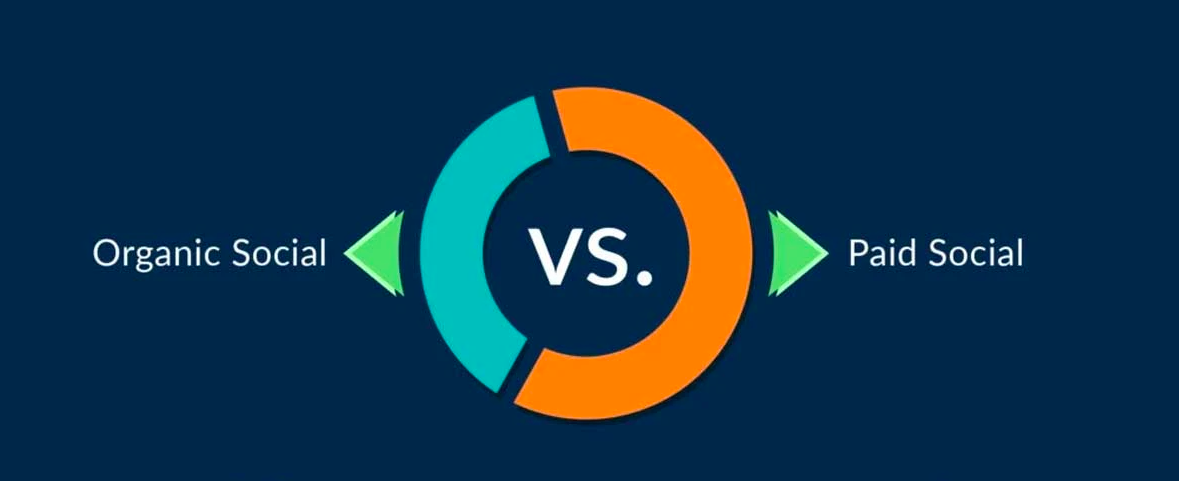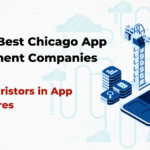
In the current competitive digital environment, companies are constantly looking for ways to connect with their target audience and attain quantifiable growth. Social media marketing agencies are crucial in establishing a harmonious strategy that integrates both organic and paid approaches, which are vital for enhancing brand visibility, fostering engagement, and ensuring sustained success. However, what specific methods do they utilize to harmonize these two distinct strategies? This article explores the techniques and best practices that social media marketing agency implement to synchronize organic and paid social initiatives for optimal effectiveness.
Understanding the Difference Between Organic and Paid Social
To effectively examine how a social media marketing agency integrates organic and paid strategies, it is essential to first comprehend each method:
- Organic Social Media: This approach encompasses content disseminated on social media platforms without the use of paid advertising. It consists of posts, stories, and updates that organically engage followers and potential customers. Organic social media plays a vital role in establishing brand identity, enhancing community interaction, and sustaining a robust online presence.
- Paid Social Media: This method refers to content that is promoted through paid advertisements. It involves the creation of advertising campaigns, targeting specific audience segments, and allocating financial resources to achieve prompt and quantifiable outcomes. Paid social media allows brands to broaden their reach, focus on particular demographics, and increase conversion rates.
A proficient social media marketing agency recognizes that the synergy of these two strategies not only fortifies brand visibility but also provides clients with both immediate and enduring advantages.
Why Balance is Essential for Social Media Success
A well-rounded strategy that incorporates both organic and paid social media tactics is essential for brands seeking sustainable growth and immediate visibility. The importance of this balance can be summarized as follows:
- Expanded Audience: Organic social media primarily engages a brand’s current followers, whereas paid social media allows for outreach to new, targeted demographics. A social media marketing agency employs both methods to enhance overall visibility.
- Improved Interaction: Organic content nurtures trust and fosters relationships with the audience. In contrast, paid campaigns enhance engagement by promoting high-performing content to a wider audience.
- Financial Efficiency: Solely depending on paid strategies can lead to high costs. Organic approaches offer long-term value, while paid initiatives can be strategically deployed for specific campaigns, creating a cost-effective equilibrium.
- Trustworthiness: Users tend to view organic posts as more genuine. A social media marketing agency utilizes organic content to build brand credibility and subsequently employs paid content to extend that trust to potential new followers.
Steps a Social Media Marketing Agency Takes to Balance Organic and Paid Strategies
A social media marketing agency utilizes various effective techniques to attain this balance. Let us examine each component of the strategy in detail.
Step 1: Defining Goals for Organic and Paid Campaigns
A social media marketing agency initiates its process by setting specific objectives for both organic and paid strategies. Common objectives for each category are as follows:
- Organic Objectives: Cultivating a dedicated community, enhancing engagement, informing the audience, and developing a consistent brand voice.
- Paid Objectives: Boosting website traffic, generating leads, promoting products, and improving conversion rates.
By defining these separate objectives, the agency can effectively allocate resources, ensuring that each strategy supports the other while minimizing any redundant efforts.
Step 2: Creating a Content Calendar that Integrates Both Approaches
An integrated content calendar enables the agency to align both organic and paid postings effectively. A standard content calendar for a social media marketing agency typically encompasses:
- Organic Content: This consists of insightful blog articles, product launches, behind-the-scenes footage, user-generated contributions, and educational narratives.
- Paid Content: This usually highlights promotions, time-sensitive offers, and retargeting initiatives.
By meticulously planning the content, agencies can guarantee that organic posts enhance brand visibility and foster community trust, while paid posts are strategically aimed at driving conversions.
Step 3: Using Data to Inform Both Organic and Paid Strategies
A proficient social media marketing agency utilizes data-driven insights to effectively develop both organic and paid strategies. Key data points include:
- Engagement Metrics: Understanding which organic posts garner the most engagement enables the agency to promote these posts through paid channels.
- Audience Insights: Analytics provide information on where a brand’s primary audience is most active and the types of content that resonate with them, guiding both organic and paid content strategies.
- Content Effectiveness: Insights into the performance of organic content assist the agency in making strategic decisions regarding which posts to promote.
By examining these metrics, the agency can improve organic reach and optimize paid advertising expenditures to better align with audience preferences.
Balancing Content Types for Optimal Engagement
The type of content is crucial for maintaining a balance between organic and paid social media strategies. Below are several examples of content that a social media marketing agency might employ for each approach:
Organic Content
- Educational Posts: These types of posts enhance value by tackling the challenges faced by the audience and providing effective solutions.
- User-Generated Content: Highlighting genuine customer experiences contributes to the brand’s authenticity.
- Behind-the-Scenes Content: Organic posts frequently unveil the brand’s character and foster a connection with its followers.
Paid Content
- Targeted Promotions: Short-term offers or new product launches are ideally suited for paid advertising campaigns.
- Sponsored Content: Enhancing the visibility of successful organic posts to reach broader audiences.
- Lead Magnets: Paid advertisements that provide free resources or incentives effectively draw potential customers into the sales funnel.
An experienced social media marketing agency employs these content types with precision, delivering a blend of genuine engagement and promotional material that offers value to users.
How a Social Media Marketing Agency Uses Paid Ads to Amplify Organic Success
For brands aiming to broaden their audience, a social media marketing agency enhances effective organic content through strategic paid promotions. The following outlines the approach:
- Enhancing High-Engagement Posts: Posts that demonstrate significant engagement reflect the interests of the target demographic. The agency can promote these posts to extend their reach to a larger audience.
- Developing Lookalike Audiences: By analyzing data from existing organic followers, the agency can create lookalike audiences for paid advertising, thereby increasing the chances of attracting individuals with similar interests.
- Implementing Retargeting Campaigns: Retargeting advertisements enable agencies to re-engage individuals who have previously interacted with organic content, motivating them to take further action.
- Executing Engagement Campaigns: Paid advertisements can be specifically designed to attract followers who are likely to engage, thereby gradually increasing the brand’s organic reach.
These strategies empower a social media marketing agency to leverage paid campaigns as a complement to organic initiatives, ensuring that both approaches work together towards achieving sustained success.
Analyzing Results and Optimizing for Continuous Improvement
Measurement and optimization play a crucial role in achieving equilibrium between organic and paid strategies. A social media marketing agency generally employs a range of tools to assess the effectiveness of each method.
Key Performance Indicators (KPIs) for Organic and Paid Strategies
A social media marketing agency may monitor various key performance indicators (KPIs), including:
- Engagement Rate: Assesses the effectiveness of organic content by measuring likes, shares, and comments.
- Follower Growth: Analyzes the influence of both organic engagement and paid campaigns on the overall increase in audience size.
- Click-Through Rate (CTR): Reflects the efficiency of paid advertisements in encouraging user actions.
- Conversion Rate: Determines the proportion of interactions with paid ads that lead to desired results, such as sign-ups or purchases.
Optimization Techniques
Through the ongoing analysis of performance data, a social media marketing agency can enhance both organic and paid campaigns for continuous advancement. Several prevalent optimization strategies include:
- Refining Target Audiences: Modifying targeting parameters according to audience behavior enhances the effectiveness of advertisements.
- Testing Ad Creative: Conducting A/B tests on ad visuals and copy aids in the refinement of paid marketing strategies.
- Adjusting Posting Times: Timing posts to coincide with peak audience activity optimizes engagement levels.
Why Software Development Companies Benefit from a Balanced Social Strategy
For a software development company, it is essential to strike a balance between organic and paid social media strategies. The reasons for this are as follows:
- Demonstrating Expertise: Organic social media content enables software development company to establish themselves as thought leaders by sharing valuable industry insights and showcasing their expertise.
- Lead Generation: Paid advertising campaigns effectively target businesses and professionals in need of software services, providing an immediate increase in lead generation.
- Enhancing Brand Trust: Organic posts contribute to building a trustworthy brand image, while paid advertisements extend reach and reinforce credibility.
By collaborating with a social media marketing agency, a software development company can effectively utilize both organic and paid strategies to engage potential clients, interact with existing followers, and foster sustained growth.
Conclusion
A key competency of a social media marketing agency lies in harmonizing organic and paid social strategies. By meticulously setting objectives, leveraging data to inform choices, and refining content formats, agencies facilitate sustainable growth for brands. For enterprises like software development company, this balanced methodology enables them to connect with broader audiences, build credibility, and effectively engage prospective clients.
Collaborating with a social media marketing agency can enable businesses to optimize both short-term outcomes and enduring brand loyalty through a robust combination of organic and paid social strategies.





0 Comments